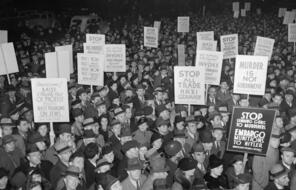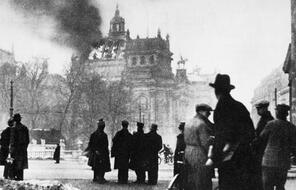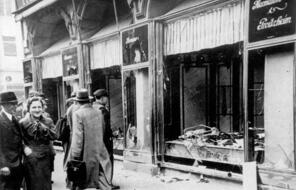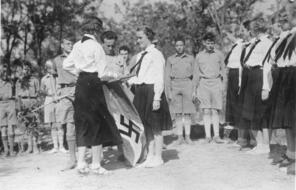Seizing Property
Subject
- History
Language
English — USUpdated
Germany created a massive bureaucracy to collect, catalog, and redistribute or sell the possessions the Nazis seized from the people they imprisoned or murdered in ghettos and camps. Historian Lucy Dawidowicz describes the agencies and procedures involved in redistributing the property the Nazis took from the nearly 2 million Jews who lived in the General Government in Poland who were murdered as part of Operation Reinhard between 1941 and 1943:
All cash proceeds in German notes were to be deposited to the Reichsbank account of the SS's Economic and Administrative Main Office (WVHA) . . . Foreign currency . . . , precious metals, jewelry, precious or semiprecious stones, pearls, dental gold, and scrap gold were to be delivered to the WVHA for immediate transmittal to the Reichsbank. All timepieces, alarm clocks, fountain pens, mechanical pencils, hand- or electric-operated shavers, pocket knives, scissors, flashlights, wallets, and purses were to be sent to a WVHA installation for cleaning and price estimation, and then forwarded, for sale, to the combat troops. Men's underwear, men's clothing, including footwear, were first to fill staff needs at the concentration camps and then to be sent, for sale, to the troops as an undertaking of the Ethnic German Welfare Office (VOMI). The proceeds were to go to the Reich. Women's clothing, underwear, and footwear and also children's clothing and underwear were to go to VOMI for cash. Pure silk underwear was assigned to the Ministry of Economy. Eiderdowns, quilts, blankets, dress materials, scarves, umbrellas, canes, thermos bottles, ear mufflers, baby carriages, combs, handbags, leather belts, shopping bags, tobacco pipes, sunglasses, mirrors, cutlery, knapsacks, leather and synthetic-material suitcases were to go to VOMI . . . Bed linens, sheets, pillowcases, handkerchiefs, washcloths, tablecloths were delivered to VOMI for cash. All kinds of eyeglasses and spectacles were assigned to the Public Health Office for sale. High-class furs, dressed or undressed, were to be delivered to WVHA; cheaper fur goods (neckpieces, hare and rabbit furs) were to be delivered to the Clothing Works of the Waffen-SS at Ravensbrück. 1
Connection Questions
- How does Lucy Dawidowicz’s list of the types of property the Nazis took from their victims help to illustrate the reality of the lives that were lost?
- How did Germany benefit materially from the mass murder of Jews, Sinti and Roma, prisoners of war, and others?
- What does Dawidowicz’s description of the bureaucracy that was necessary to process all of the seized possessions suggest about the number of people who must have known about what was happening in the ghettos and camps?
- 1Lucy S. Dawidowicz, The War against the Jews, 1933–1945 (New York: Holt, Rinehart and Winston, 1975), 197–98.
How to Cite This Reading
Facing History & Ourselves, “Seizing Property”, last updated August 2, 2016.












